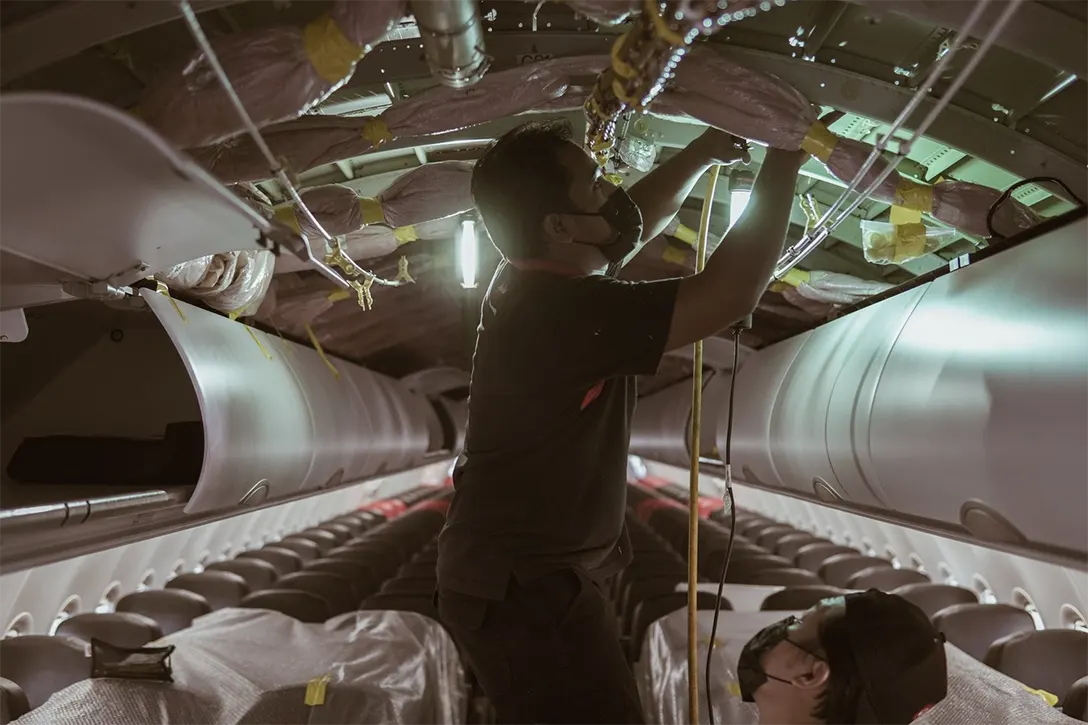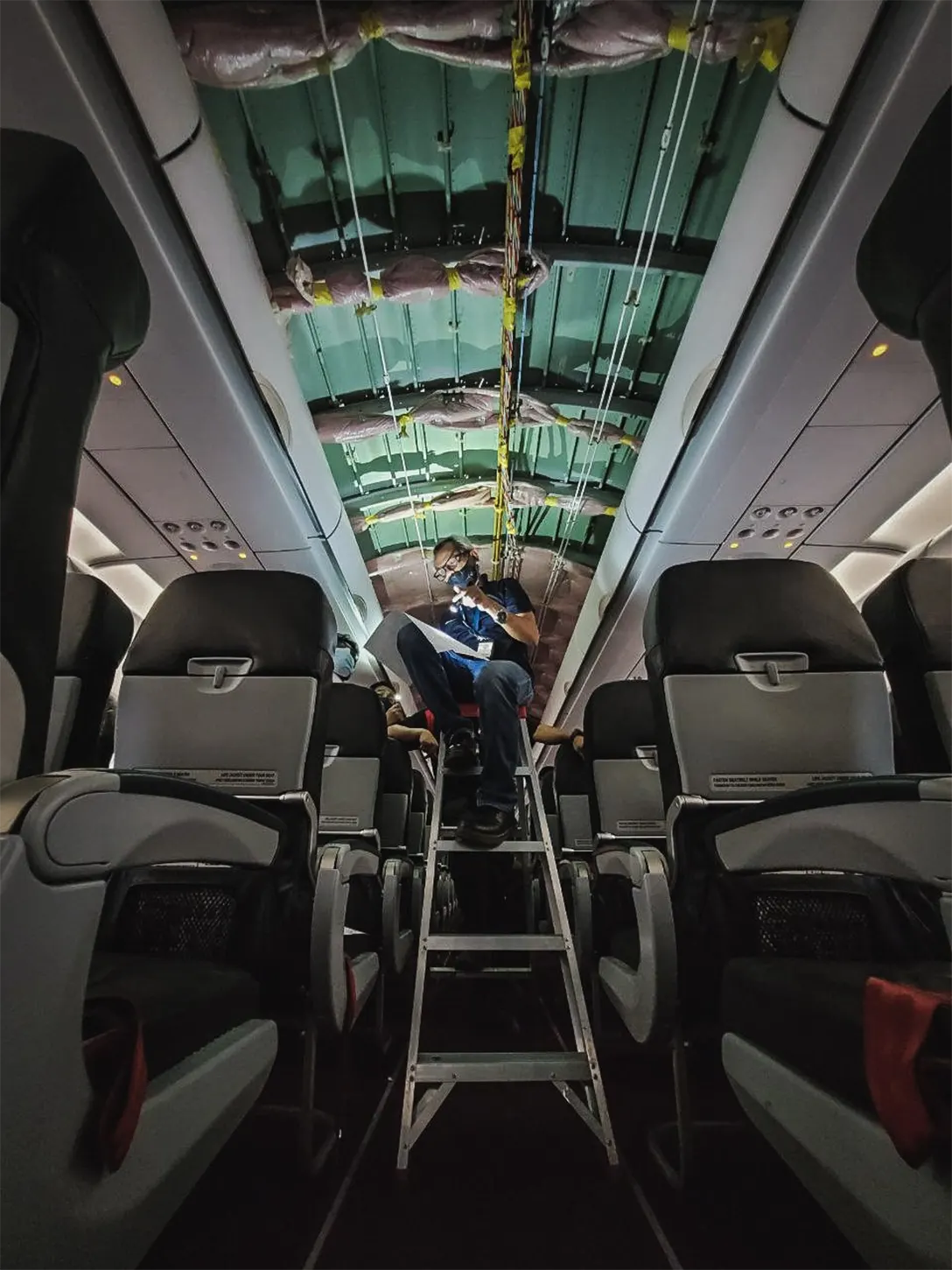13 May 2022

Southeast Asia is emerging as a key aircraft maintenance hub, and the chief executive officer of a relatively new player says his company is betting big to take advantage of expected further growth in demand.
Established in 2018, AirAsia-affiliated Asia Digital Engineering maintains, repairs and overhauls aircraft for the budget carrier and other customers. It, like the airline, falls under Capital A, which is led by AirAsia founder Tony Fernandes.
Mahesh Kumar, ADE’s chief executive officer, said the company has seen a spike in demand for aircraft maintenance and repair in the region and is in discussions with foreign companies looking for opportunities.
He said it is currently raising RM400 million in debt-equity financing. Of that, RM250 million is to be used to construct a new maintenance, repair and overhaul (MRO) facility near Kuala Lumpur International Airport (KLIA).
“We have received queries from various airlines seeking an MRO partner in Southeast Asia due to its strategic location and cost competitiveness,” he told Nikkei Asia in a recent interview. He declined to name them for reasons of confidentiality.
According to research firm Mordor Intelligence, Southeast Asia’s aircraft MRO market covering commercial, military and general aviation was worth more than US$4.5 billion (RM19.8 billion) in 2021 and is forecast to record compound annual growth rate in excess of 8.5% from 2022 to 2027.
“Players from countries like Indonesia, Malaysia, and Thailand are trying to replicate the success of Singaporean players and developing their MRO capabilities, which is positioning Southeast Asia as an important hub for Aircraft MRO globally,” it said in a report.
Malaysia and other Southeast Asian countries have been actively reopening borders in a shift to a strategy of living with Covid-19 as they seek to avoid further damage to economic and investment activity from the pandemic.
ADE’s new MRO facility is expected to start construction in the middle of this year and be completed in two years. The 380,000-sq ft (35,300-sq m) facility will be able to provide full MRO services for up to 14 commercial aircraft at a time, which ADE says would position it to be one of the largest MRO providers in Asean.
Services offered by ADE are focused on the Airbus A320, A321 and A330 jets, including line maintenance as well as warehouse and engineering support services. The company has, however, started servicing other aircraft types from both Airbus and Boeing.
Mahesh said ADE’s selling points include the ability to crunch data to perform predictive maintenance, resulting in quicker aircraft turnaround. He added that an enormous stock of parts and digital records also contribute to ADE’s competitive advantage.
Besides Malaysia, ADE is also working on expanding its services to the Philippines, Indonesia and Thailand. The company will allocate about RM150 million for the expansion, said Mahesh, an engineer by training.
“We have already received approval from the civil aviation authorities in these countries. Our next move is to establish a base there,” he said.

Singapore firmly ahead
Despite ADE’s ambitions, there are obstacles in the way, namely regional MRO leader Singapore. The country’s “homegrown aviation companies, ST Aerospace and SIA Engineering, are among the top MRO companies globally, both in terms of revenues and capabilities,” according to Mordor Intelligence.
Aviation analyst Shukor Yusof of Endau Analytics also sees the city-state as being firmly ahead.
“Singapore is the main benefactor in the current climate,” he said. “Singapore has depth in MRO specialists and facilities. Malaysia remains in Category 2, downgraded by the FAA in November 2019, and this, together with Covid-19, have severely impacted growth in Malaysia’s MRO market.”
SIA Engineering has just reported improved earnings – swinging to a profit of S$67.6 million (RM213 million) for the financial year ended March 31 from a loss of S$11.2 million – as demand for air travel, and thus aircraft maintenance and repair, has begun to rebound.
The company said flights it handled in Singapore in March reached 38% of its pre-pandemic workload, with the outlook set to improve after the government from April 1 completely reopened borders to all vaccinated travelers.
“The government had affirmed its confidence and commitment to reclaim Singapore’s status as an international aviation hub,” SIA Engineering said. “These developments augur well for a stronger recovery in the new financial year.”
ADE’s parent, Capital A, was launched as a holding company in January. It remains heavily reliant on its core airline business, despite expansion into areas including ride-hailing, restaurants, food delivery, and cargo. AirAsia has seen modest recovery in the second quarter after two years of pandemic-induced travel restrictions and border closures.
But also in January, Bursa Malaysia called Capital A’s finances into question, putting it under “Practice Note 17”, (or PN17), which demands that it conduct a financial restructuring within a year or face automatic delisting.
Capital A in March was denied a government-backed loan of RM500 million that it had expected and been counting on to fund operating expenditures amid the regional reopening of international borders for travel and tourism.
Despite only being around for four years, Mahesh said ADE is already financially self-sustaining, reporting a profit for calendar year 2021.
“Despite being a young company, we don’t depend on [Capital A] for funds,” Mahesh said.
Source: www.freemalaysiatoday.com
Site Search
Did you find what you are looking for? Try out the enhanced Google Search: